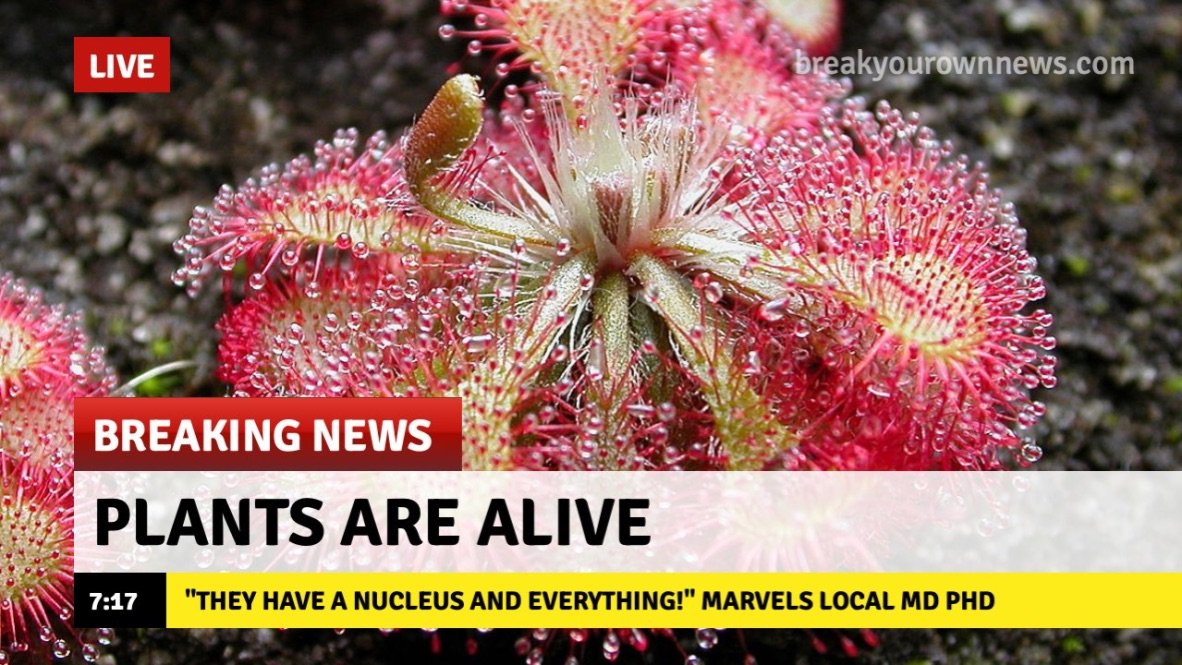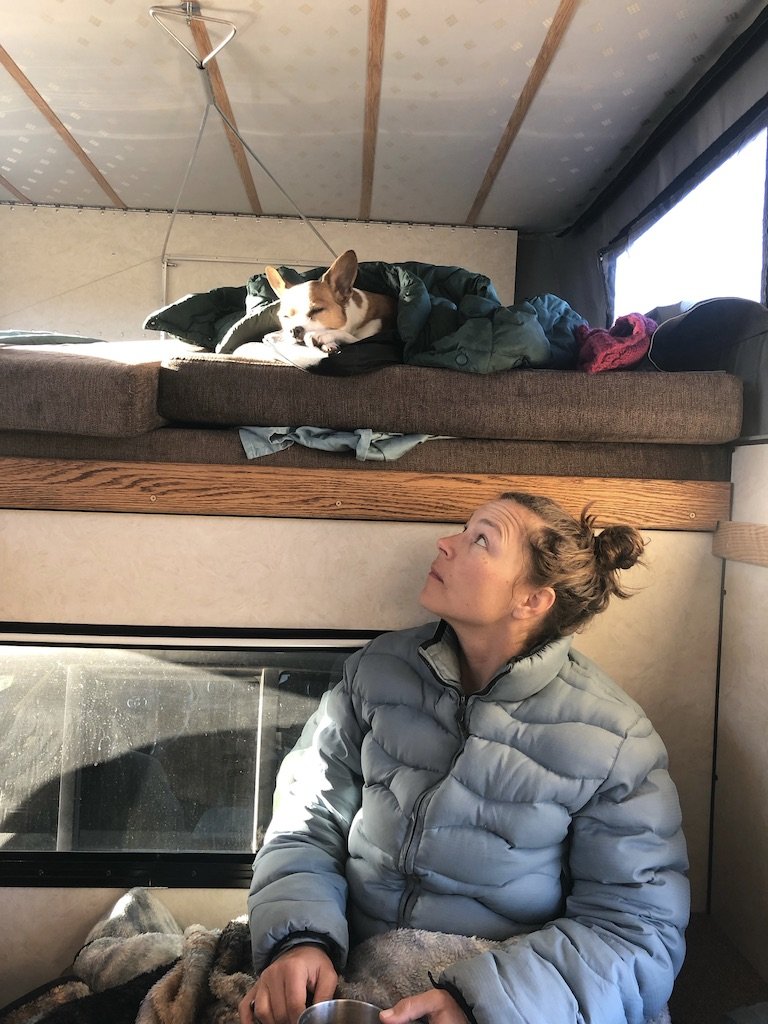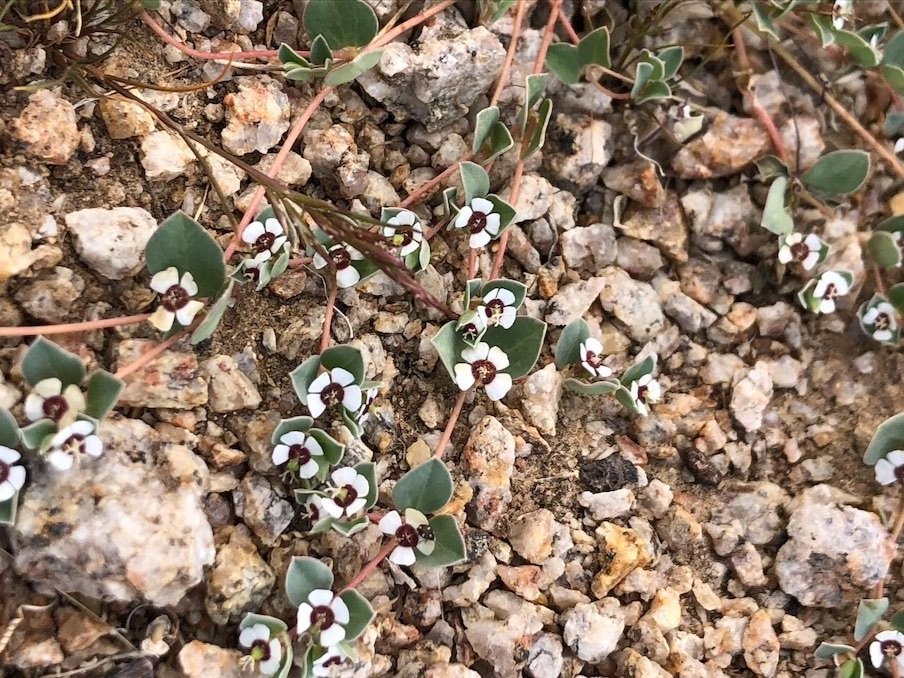I wasn’t going to write about the most recent trip to the desert. With all that is going on in the world, isn’t it self-indulgent and tone deaf to share about another glorious nature jaunt? But when I got home, I saw this on social media, and it changed my mind:
It made me realize that bringing to light what remains right in the world, however big or small, is an act of peace.
So peace it is.
Black Mountain Wilderness
Last spring, as I hauled my tired bones out of my tent after a too-short night’s sleep, I told my colleague, “Welp, I’m earning my winter rest.” I remind myself of this a lot during the sometimes-exhausting field season. I love living my life seasonally: my actions in sync with the weather and the swivel-tilt of the earth. In spring and summer, when the work days are long and the rest minimal, though my body is tired, I have a wellspring of internal energy that propels me and surpasses logic. I used to refer to this phenomenon by saying, “I’m solar-powered,” as the long sunny days seemed to feed me beyond anything I ate.
Big Sur, April 2021: Body exhausted, the rest of me high on fieldwork and freedom.
When I’m in the thick of the field season, it’s as if there is a separate engine driving me, one that exists outside the usual caloric bank. But I know in the midst of it that I’m drawing it down; and that eventually I will need to pay it back, fill the reserves. And that part is much harder, because it requires deep stillness and rest in winter, something that is very difficult to carve out when all the things I shelve during the field season (peer reviews, writing, data analysis, reporting, reading the literature, and enjoying the rest of my non-fieldwork life) beckon.
Hometown hike in winter.
Last November I kicked off winter resting season with another trip to the desert—a much-needed unplugging from the frantic scramble to ‘get it all done’ before the holidays. What I remembered in the wide open spaces and bottomless silence is that it never all gets done before the holidays; or after, for that matter. ‘It all’ is never finished, just a continual stream on the conveyor belt of to-dos. So these two trips to the desert have bookended the winter rest intention this year: one to kick it off in autumn, and one deep inhalation to bring it to a close at the spring equinox.
The bliss of morning coffee (and camping hair). #camperlife
We are in a groove of exploring the many designated wilderness areas in the Mojave Desert: areas that are formally closed to motorized vehicles and development of any kind. This time, we chose the Black Mountain Wilderness. South of Death Valley and immersed in a sea of surrounding military bases, it was spacious, peaceful, and quiet.
The deep silence was occasionally broken by the practice flights of the jets overhead, and I had only a few small heart attacks when they broke the sound barrier. I asked aloud, “Aren’t they not supposed to do that?” and the reply was, “It depends on how you define ‘supposed to’.” And it’s true: when you make the rules, what, really, are the rules?
Martial law aside, I actually have a lot of respect for the Department of Defense (DOD) from a conservation perspective. As an extensive public lands holder, DOD has become one of the largest de facto conservation lands managers in the federal government. While conservation isn’t specifically part of their mission (in contrast to, say, the National Park Service), they actually do a considerable amount of work to conserve native species.
Simply by setting lands aside for security and training purposes, and barring them from disturbance or public access, DOD has found itself in the stewardship of a large number of endangered species—and many who have lost their habitat anywhere outside DOD lands. A few of many examples: Vandenberg Space Force Base, CA, home to the Vandenberg monkeyflower and an extremely rare, newly described species of salamander; the Golden-cheeked warblers of Fort Hood, TX; and the San Clemente loggerhead shrike on San Clemente Island Naval Auxiliary, CA.
Section 7 of the U.S. Endangered Species Act (ESA) requires federal agencies to do all they can to conserve listed species whenever possible. Unfortunately, many agencies minimize or choose to ignore this mandate. By contrast, DOD largely takes its responsibilities under the ESA very seriously, and even takes proactive measures to conserve listed species in their charge.
The wilderness areas in the Mojave are an example of how defense objectives and conservation objectives coalesce. All of the wilderness areas we visit are in close proximity to some military lands. Wilderness is a special designation (from the 1964 Wilderness Act) that closes areas to automated vehicles and other activities that are hard on the land. By designating areas (mostly managed by the Bureau of Land Management) near military bases as wilderness, it not only conserves species and habitat, but reduces the number of onlookers poking around in the vicinity—you know, fewer things/people/objects/activities to keep an eye on. This results in a win-win: national security and conservation in one.
We drove the rutted roads past where anyone in their right mind would take a toy hauler. We found a place to park the truck and camp that had been disturbed but not trashed, and just outside the wilderness boundary so we could explore in the wilderness on foot every day. Because there were no designated trails, we walked up washes. We found tiny wildflowers, desert tortoise shells, and shotgun shells: remnants from before the wilderness was designated in the 1990s.
Remnants of an endangered desert tortoise.
A few days in, after my nervous system finally let go of stress mode, I became less task-oriented and more landscape-oriented. There was so much to see, to explore, to take in—without even moving. When we were moving, we found an astonishing number of mylar balloons tangled in the desert scrub to add to the growing database. But we also found petroglyphs, and the tiniest stirrings of the desert awakening from winter: fresh sprouts on the creosote, and flowers so small you’d miss them if you didn’t stop and stare at the ground for awhile. We did miss the carpets of color by a week or two, but in exchange we got to experience the place in near-solitude.
The final morning of our visit, as I lay on the ground taking in the last rays of the morning sun, I rolled over on my side, not wanting to leave. The jets had quieted. Maybe the pilots were on their way back to the galley for lunch. Tiny yellow poppies were growing next to my mat at eye level, an infinitesimal sequoia towering over boulders of quartz not much larger than sand. The sky and mountains and outstretched desert behind were a universe of possibility that I only needed to refocus to see. And there it was: everything I prepared and scouted and walked and sat and explored and drove all that way to learn. At that tiniest level, in that exact moment, everything was OK. The flower would soon wilt and die in the desert sun, because that is life. But in that tiny slice of time, all was well. The tinier the slices of time and space, the easier it is to see what is still right in the world.









